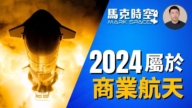【新唐人2011年12月3日讯】温州动车事故后,因为质量问题,被中国北车集团在8月份召回的54列京沪高铁动车组,最近将全部恢复上线运行。此外,京沪高铁也将调整列车运行图,增加班次。在民众对温州事仍然心有余悸,事故报告还未出炉的情况下,恢复密集运行的高铁是否将再履薄冰?我们来听专家的分析。
大陆铁道部在12月1号表示,因为质量问题被召回的54列CRH380BL型动车组将全部恢复上线运行。在此之前铁道部就声称,中国北车集团对召回的问题动车组进行了认真整改,已确认整改合格,从11月16号起将分批投入运营。
中南大学城市轨道交通研究所退休教授王成立认为,新年返乡潮即将到来,铁道部急于赚钱。
中南大学城市轨道交通研究所退休教授王成立:“现在春运比较要紧嘛,铁路部又是亏损的,它只有春运赚点钱,中国的问题复杂的很,就像中国的煤矿一样,实际上有人在那里检查,你煤矿一样的出事故。你这个动车将来出了事故再说了。”
《新京报》报导,北车召回的54列CRH380BL动车,合同金额超过200亿,加上此前有67亿订单延迟交货,这次北车约有270亿合同受损。同时,京沪高铁22班次被停运,这条线的运营效益也再受打击。
那么,这些问题动车是否真的可以安全上路了呢?
大陆前铁路工程师詹先生表示,被召回的问题动车究竟存在什么问题,如何整改,是否真正解决了问题,到现在当局也没有给公众一个具体答案。
大陆前铁路工程师詹先生:“在这个追尾这么严重一个高铁事故当中,可以说,中国大陆不管从中共当局还是铁道部来讲,没有从中吸取教训,没有真正分析事故发生的真正原因是什么,没有把这些简单的安全隐患解决掉,那么现在还是走回老路上去,那么实际上说,这些隐患仍然存在。所以说,随时对老百姓的出行安全是存在着危险的。”
随着这54列动车组回归,京沪高铁将于12月12号起调整列车运行图,同时启用全新列车时刻表。这次调图,京沪高铁安排了92对列车高峰期满图运行。温州动车事故发生前是每天88对。
詹先生质疑,这相当于每十五分钟就开行一趟列车,这样的密度,是否为再次发生追尾事故埋下隐患?
詹先生还透露,没有被召回的列车也许质量问题更严重。
詹先生:“其实以前,很多列车出现比这更严重的质量问题,但是因为它不敢曝光,也不敢停运。不能停怎么办呢,实际上是边运行边返修,它没有返回工厂,并不意味着它问题就小,实际上问题更严重。实际上老百姓是坐着问题车,天天在跑,不知道自己坐的车存在严重的质量问题。”
最近,大陆高铁再传事故。12月1号,广深港高铁隧道工地钢筋架垮塌,16名工人被埋隧道中,造成2人死亡,3人重伤。
此外,高铁又有列车因故障而所谓“趴窝”停运。 11月29号下午,G16次高铁济南停运将近3小时,据说是因为供电网故障,停电期间共影响上行列车13趟。
网友“黎静M”在微博上说:“车门关了,电也停了,下不了车。请大家微博转下,告诉后面的动车G130,G134 ……别撞上啊。”
新唐人记者梁欣、李静、周天采访报导。
Recalled Bullet Trains Put Back Into Service, But Are They Safe?
After the bullet train accident in Wenzhou City, 54 bullet trains
that travel between Beijing and Shanghai, were recalled in August because of quality control issues.
They will be put back into service very soon.
In addition, officials will adjust the operational mapping
of the high-speed trains between Beijing and Shanghai, which will increase the frequency of train stops.
At present, the public is still worried about the
Wenzhou accident and the fact that the accident report has not been officially published.
So people don’tknow if it is safe to continue to use high-speed trains.
Let’s listen to an expert analysis of the situation.
China’s Ministry of Railways reported on December 1st
that the 54th bullet train, model-CRH380BL,
which were recalled earlier this year because of quality control
issues, will be put back into service.
Prior to this, the Ministry of Railways claimed that
the China North Vehicle Group had rectified the problem
related to the recalled bullet trains and that the Ministry
confirmed the claims made by the Group.
They will be put into service in batches, starting on Nov. 16.
Wang Chengli, a retired professor from the Urban Rail Transportation
Institute of the Central South University (URTICSU),
believes that masses of people will want to use bullet trains
during the Chinese New Year, and the the Ministry of Railways is eager to make some money.
Retired professor, Wang Chengli, from the URTICSU, said:
“Now, the Chinese New Year’s transportation issue is very important.
Since the Ministry of Railways has suffered such a big loss,
it is very concerned about making money during the Chinese New Year.
China’s problems are very complex,
like the Chinese coal mines.
There are people who overlook the coal operations, yet mine
accidents still occur.
If a bullet train is involved in an accident, officials don’tpay
attention to it, they just worry about it in the future."
Beijing News reported that the 54th bullet train,
model-CRH380BL, were recalled by North Vehicle Group,
which has a contract to build
over RMB 20 billion (US$3.14 billion) worth of bullet trains.
In addition, delivery of a bullet train
order worth RMB 6.7 billion (US$1.05 billion) was delayed.
In the end North Vehicle Group lost about RMB 27 billion
(US$4.25 billion).
Meanwhile, 22 shifts of high-speed trains were shut down
between Beijing and Shanghai, causing further financial loses.
So, are these problematic bullet trains really safe enough to
be put back into service?
Mr. Zhan, a former railway engineer in mainland China,
explained the exact problems that the recalled bullet trains had,
how to rectify them, and
whether these problems were really resolved.
So far, the authorities have not given a specific answer
to the public.
Mr. Zhan, a former railway engineer in mainland China:
“Regarding the serious nature of high-speed trains crashes,
it appears that Chinese Communist Party (CCP) officials
and the Ministry of Railways, didn’tlearn their lessons.
They didn’tanalyze the real causes behind the crashes.
They haven’teven tackled some simple security risks.
But now they’re going back to their old ways.
In fact, these risks still exist.
So travelers will be constantly faced with security risks.”
With the 54th bullet train returning to service, officials will
adjust the trains’ operational mapping between Beijing and Shanghai,
which will create a totally new train timetable.
By adjusting the train schedule, 92 pairs of trains will be
in full operation at peak times between Beijing and Shanghai.
The number of pairs of trains in operation before
the bullet train accident in Wenzhou City was 88.
Mr. Zhan questioned the logic of having one train
arrive every 15 minutes.
Will this frequency invite other fatal train accidents?
Mr. Zhan also revealed that trains that were not recalled
could have even more serious quality control issues than the recalled trains.
Mr. Zhan: “In the past, many trains had even more serious
quality control issues,
but they were not made known to the public and the
Ministry of Railroads dared not stop the trains from running.
What can be done if the trains don’tstop operating?
In fact, they were repaired while they were in service.
They were not returned to the factory.
It didn’tmean that they didn’thave little problems.
They actually have even more serious problems.
In fact, people are sitting on these accident-prone trains, every day.
People don’tknow that the trains that they are traveling on
have serious quality control issues.”
Recently, high-speed trains in mainland China were
involved in accidents.
On December 1st, at the Guangzhou-Shenzhen-Hong Kong
line construction site of a high-speed railway tunnel,
the steel frames collapsed, burring 16 workers in the tunnel.
Two people were killed and 3 people were seriously injured.
Netizen Lijing M said in a micro-blog: “The train’s doors
closed, and the power was shut off, making it impossible to get off the train.
Please post this on micro-blog:
Please tell the bullet train G130, G134 don’t bump in our train…”
NTD reporters Liang Xin, Li Jing and Zhou Tian





























